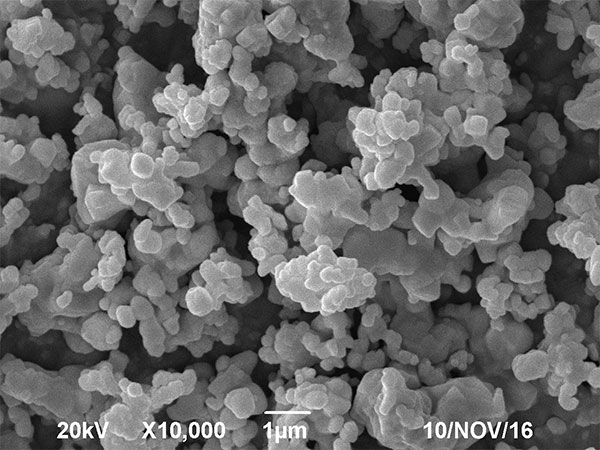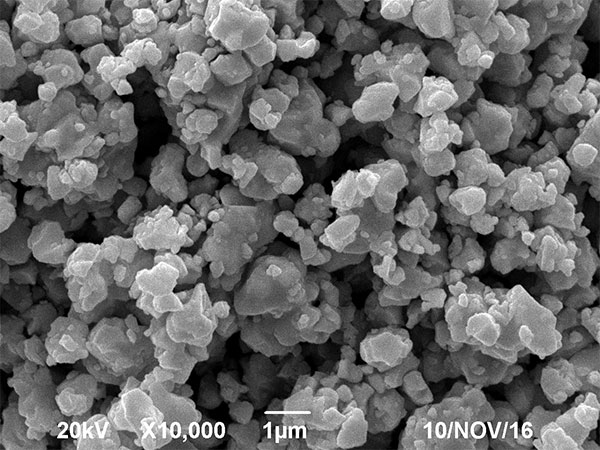

Although my country's tungsten resources account for about 60% of the world's total, there is still a considerable gap compared with the world's leading companies in terms of the quality of its cemented carbide. Therefore, not to mention foreign countries, the domestic demand for high-end cemented carbide, especially CNC blades, generally does not choose domestic products.
For decades, domestic cemented carbide people have also made unremitting efforts and exploration. Especially in the last ten years, with the improvement of cemented carbide manufacturing equipment and process improvement, the quality of traditional cemented carbide inserts has been greatly improved. However, since some fatal bottlenecks affecting the quality of cemented carbide have not been broken through, domestic cemented carbide inserts can still only hover between the middle and low grades.
What factors affect the quality improvement of my country's cemented carbide inserts? There are certainly reasons for process control, finishing precision, coating level, management details, etc., but I think the biggest reason is the congenital shortage of raw materials, which is a popular phrase in the material research academia called "genetic defects".
Regarding the problem of "genetic defects", it is not only in the cemented carbide industry, but also in the manufacture of high-end end products in all walks of life. So, what is the biggest "genetic defect" that currently affects the quality improvement of cemented carbide inserts? I think the first problem is the crystal morphology, refinement and homogeneity of the tungsten-titanium solid solution and its tantalum-niobium additions.
1. Tungsten-titanium solid solution
1. Crystal appearance of solid solution
We know that titanium in tungsten-titanium solid solution mainly comes from titanium dioxide that meets metallurgical requirements. The production process is: first mix titanium dioxide, tungsten carbide and carbon black evenly in a mixer, then unload the material for boating, put the boat into a carbonization furnace for high temperature sintering, or place the boat in a vacuum Sintered in the furnace. Its chemical reaction formula is: TiO2+WC+C—(Ti+W)C+CO↑. It can be seen from this reaction formula that, first, at high temperature, carbon black first reduces the oxygen in titanium dioxide, and then the remaining carbon is combined with titanium to form titanium carbide. Driven by thermodynamics, the particles of tungsten continue to occupy the lattice position of titanium in a dislocation manner to form a substitutional solid solution or lattice solid solution, thereby obtaining the tungsten-titanium solid solution we need.
Judging from the solid solution process briefly described above, after the oxygen in the titanium dioxide forms CO and runs away, a certain space will be left, and the solid solution is completed by dislocation. Therefore, it will inevitably cause the solid solution of titanium and tungsten particles that are close to be fast, and the solid solution of far away is slow. Moreover, it takes continuous extension of time and energy absorption to stay far away. Otherwise, a non-single-phase solid solution will be formed due to insufficient solid solubility. However, after the titanium-tungsten particles that are close to each other are solid-dissolved, they will continue to aggregate to form coarse crystals under the condition of continuous energy supply, while the tungsten-titanium particles that are farther apart will form relatively finer crystals. grain. Therefore, the crystal morphology of the solid solution formed under such conditions will definitely be incomplete. To this end, after long-term research and experiments, I have basically solved the problem of incomplete crystal morphology of tungsten-titanium solid solution by changing the traditional production process (see picture).

Tungsten-titanium solid solution (FSSS1.26 micron) produced by traditional vacuum furnace

Emerging process to produce tungsten-titanium solid solution (FSSS0.90 micron)
It can be seen from the electron microscope image magnified by 10,000 times that in the traditional process, although we use a vacuum furnace, the solid solution produced still does not have a complete crystal appearance (the carbon tube furnace produces worse), the grain edges are not clear, and the shape is not clear. regular. The solid solution produced by the emerging process is much better in terms of crystal morphology and particle size uniformity. Then, using the solid solution produced by the emerging process as the raw material to produce the cemented carbide, how can the quality index be improved? This problem can be illustrated according to a set of experimental data I did in September 2012. At that time, the medium-grain solid solution produced by the emerging process (the technology for producing ultra-fine particles was not mastered at that time) was configured with one kilogram of YT14 mixture, and 0.45% TaC was added, and the rest were produced according to the YT14 cemented carbide process. 15 test strips were obtained. 10 of them were selected to make several performance indicators. The density, strength and hardness indicators are as follows:
Density (g/mm3) Bending strength (kn/mm2) Hardness (HRA)
1. 11.58 1780 91.3
2. 11.62 1710 91.5
3. 11.55 1660 90.9
4. 11.60 1790 91.1
5. 11.56 1770 91.2
6. 11.61 1760 91.2
7. 11.57 1820 90.8
8. 11.53 1550 91.4
9. 11.59 1830 91.3
10. 11.61 1810 91.4
From the analysis of this set of data, except that the density of the alloy is only slightly larger than that of the standard YT14, its strength and hardness have been greatly improved.
2. Particle size of solid solution
In order to meet the needs of the continuous development of the manufacturing industry, whether it is powder metallurgy molding or casting molding, whether it is crystal structure or vitreous structure, it has put forward higher and higher requirements for the quality of raw materials in the early stage. Among them, the most urgent requirement is the continuous refinement of raw material powder particle size.
As mentioned earlier, the titanium in cemented carbide is derived from TiO2. TiO2 is a metal oxide with good stability. To reduce its oxygen, it must be reduced by carbon at high temperature (a vacuum furnace needs about 1600 degrees, and a carbon tube furnace needs about 1800 degrees). The titanium powder particles formed at such a high temperature have high activity, and can quickly combine with carbon to form TiC powder, and the formed TiC powder quickly aggregates to form relatively coarse TiC. Therefore, it is simply impossible to produce ultrafine and near-nanoparticle TiC powders and corresponding solid solutions using conventional carbonization processes.
In order to obtain ultra-fine particles of tungsten-titanium solid solution, some manufacturers first use a vacuum furnace to produce a solid solution of about 1.5 microns, and then use a wet mill for enhanced ball milling for more than 100 hours. In this way, although ultra-fine tungsten-titanium solid solution can also be obtained, its performance is far from that of ultra-fine tungsten-titanium solid solution directly produced by emerging processes. This is because:
① The memory effect of powder particle size is difficult to eliminate.
We know that the particle size of the same powder is directly related to the internal energy and surface energy contained in the powder particles, and the larger the particle size, the higher the energy contained. However, the enhanced ball milling of the coarse powder can only eliminate the distortion energy of the surface and the stress energy between the loose agglomerates to a large extent, and it is difficult to eliminate the binding energy between the fine grains. That is to say, it is difficult to eliminate the energy contained in the powder particles. The powder saves energy, which is equivalent to preserving the memory of the original particle size. During the alloying process, these seemingly smaller particles rapidly grow again at high temperatures. Some people abroad have done experiments. The ordinary fine-grained YG alloy mixture is wet-milled to achieve the particle size effect of ultra-fine particles.
② The alloy clip is rough and the impurity content is high.
Due to the long wet grinding time, a large number of alloy balls and the wall of the ball mill were ground off and mixed into the alloy raw materials. We don't care what material the alloy balls used for wet grinding are made of, because the alloy balls entering the material after being ground are already alloyed, and their powders are solid solution particles of WC and Co. Therefore, even if the alloy balls are made of nanoscale materials, they will still rapidly grow into coarser particles during the second alloy sintering process. In addition, tilting ball mills are generally made of stainless steel, so long-term wet grinding will also increase the iron content in the alloy raw materials.
③ The oxygen content of the alloy raw material is greatly increased.
Because the wet grinding time is too long, the surface activity of the alloy powder is enhanced, so that the alloy powder is easily adsorbed oxygen and directly oxidized during the preparation process.
④ The alloy particle size is not uniform.
The method of using enhanced ball milling to reduce the powder particle size is the process of continuously impacting and grinding the raw materials with alloy balls, so that the distortion energy of the raw materials and the stress between some agglomerates can be continuously eliminated. In the early stage of wet grinding, it is relatively easy to eliminate the distortion energy, but in the later stage, since the shapes of the particles of the hard phase powder are basically the same, under the action of mechanical force, the alloy balls do to each hard phase powder aggregate. The powers are basically the same. Therefore, intensified ball milling cannot improve the inhomogeneity of the original particle size.
3. The homogeneity of solid solution.
In the research and application of contemporary high-end materials, the uniformity of materials has been raised to a high level. It is useless to have a fine average particle size, but to be uniform and fine. Paraphrasing the words of Confucius, "the country suffers from failure, especially if it suffers from unevenness", and it is more appropriate to change it into "if the material is too small, it is especially uneven." It can be seen from the previous electron microscope image that the uniformity of the tungsten-titanium solid solution powder produced by the emerging process is much stronger than that produced by the vacuum furnace.
2. Tantalum niobium and other additives
At present, the commonly used additives in the field of cemented carbide are: tantalum carbide, niobium carbide, tantalum-niobium solid solution, vanadium carbide, chromium carbide, etc. Except that the temperature of producing tantalum carbide with Ta2O5 as raw material is slightly higher, the other types of reducing carbonization temperature required are relatively low, and it is easier to produce ultra-fine carbide powder. And through the process of two reduction and carbonization, tantalum carbide can also produce ultra-fine particle powder.
3. Prospects for quality improvement of alloy inserts produced by emerging technology
1. Greatly prolong the service life of the alloy.
Whether it is a crystalline structure or an amorphous structure, the use of ultra-fine and nano-scale and homogeneous raw materials is used for production, and the performance of its products is greatly improved. In the field of cemented carbide, it has been verified in YG alloys. When the tungsten carbide grains of the alloy are close to nano-scale, the strength and hardness of the alloy are greatly improved. It subverts the general perception that conventional alloys have high strength and low hardness, and high hardness and low strength. Then, if we use the new technology of tungsten-titanium solid solution and ultra-fine additives to produce the alloy blade, its strength and hardness will definitely be greatly improved. It is unquestionable.
2. Improve the precision grinding of alloys.
Due to the refinement of the grains of the alloy, the precision of the natural alloy to be finely ground will be improved.
3. Enhance the adhesion of the coating (subject to verification).
Hot information

